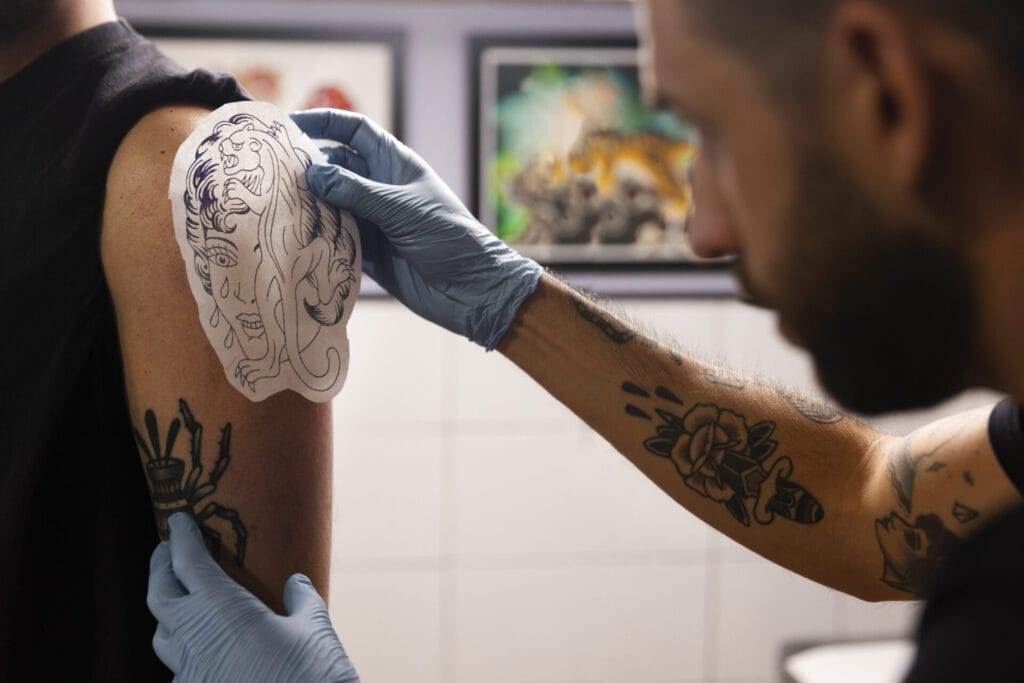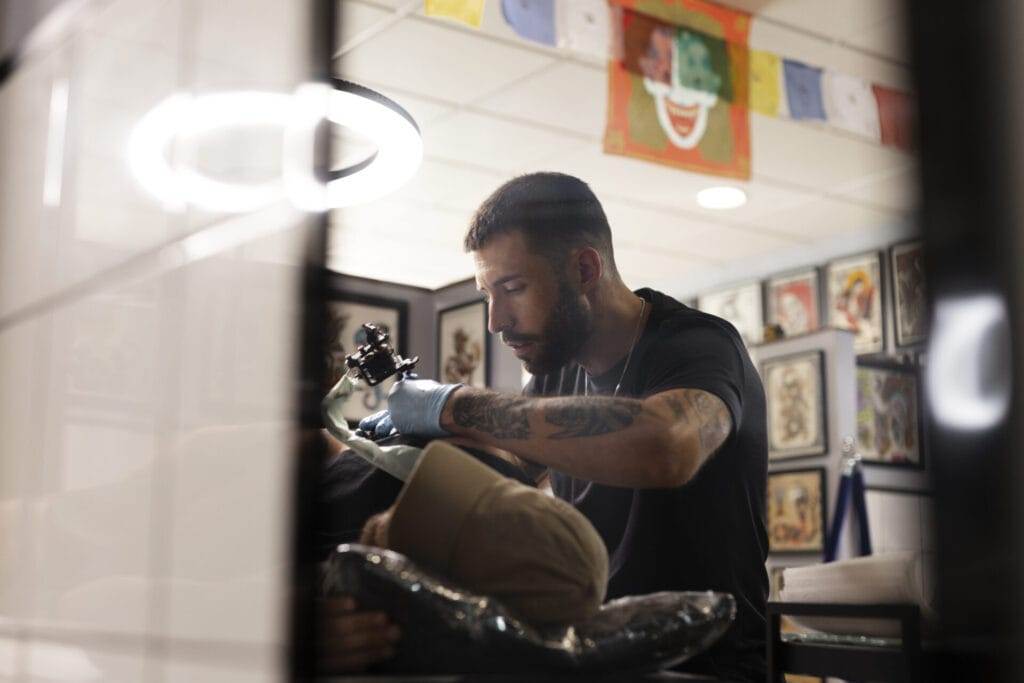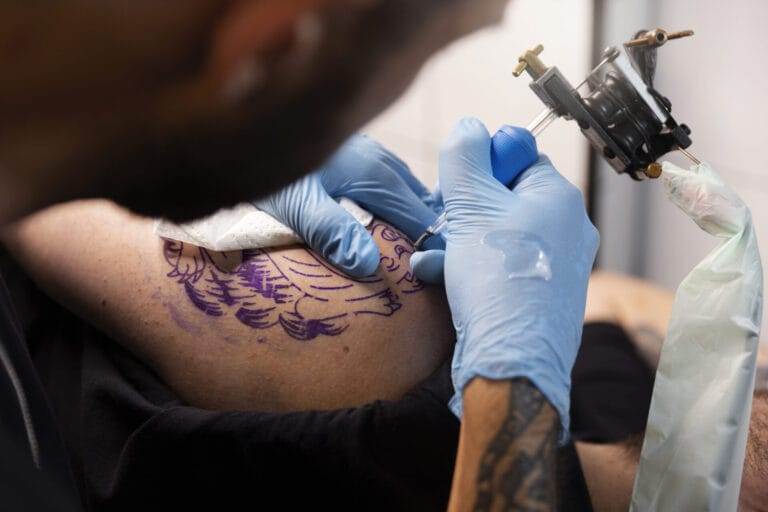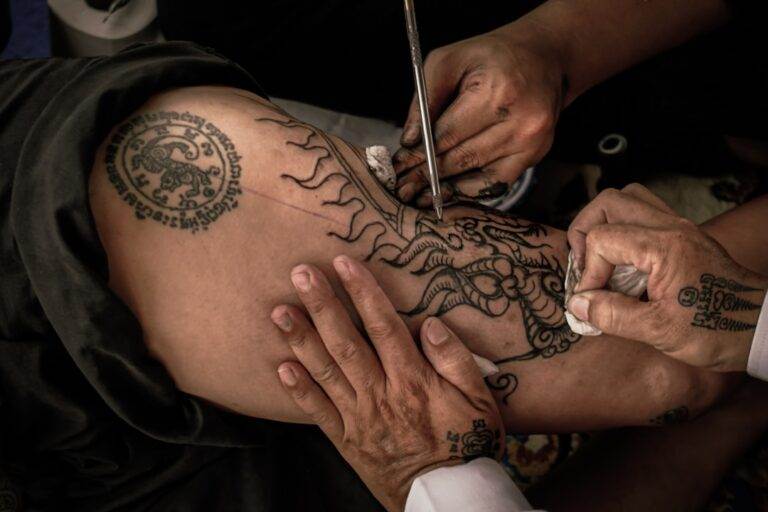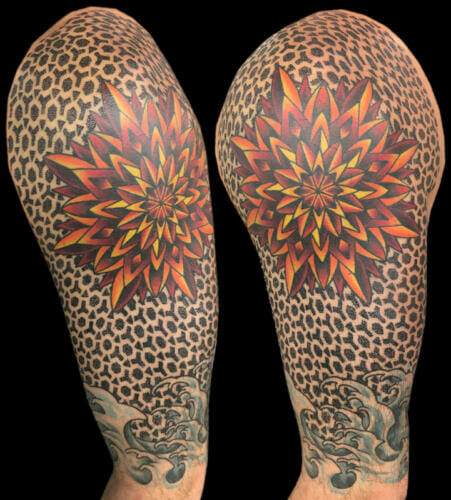
Tattoos have become increasingly popular in recent years, with more and more people choosing to express themselves through body art. However, getting a tattoo is a big decision and requires careful consideration. One of the most crucial aspects of the tattoo process is the consultation. This initial meeting with your tattoo artist allows you to discuss your ideas, ask questions, and ensure that you and the artist are on the same page. The importance of tattoo consultations cannot be overstated, as they lay the foundation for a successful tattoo experience.
During a consultation, you have the opportunity to meet with your tattoo artist and discuss your design ideas, placement options, and any concerns or questions you may have. This meeting allows you to gauge the artist’s skills, style, and professionalism, ensuring that they are the right fit for your vision. It also gives the artist a chance to understand your expectations and provide valuable input based on their expertise. By having a consultation before getting inked, you can avoid potential misunderstandings and disappointment down the line.
Preparing for Your Tattoo Consultation: What to Expect
Before your tattoo consultation, it’s important to do some preparation to make the most out of your meeting. Firstly, gather reference materials that inspire you or reflect the style you’re looking for in your tattoo. This could include images, photographs, or even sketches. These visuals will help you communicate your ideas effectively to your tattoo artist.
Additionally, it’s essential to research different tattoo artists and studios in your area. Look at their portfolios to get a sense of their style and skill level. Read reviews from previous clients to ensure that they have a good reputation for professionalism and hygiene. By doing this research beforehand, you can narrow down your options and choose an artist who aligns with your vision.
During the consultation itself, expect to discuss various aspects of your tattoo. Your artist will likely ask you questions about your design ideas, size, placement, and any specific details you have in mind. They may also provide suggestions or modifications based on their expertise. This is a collaborative process, so be open to their input and trust their professional judgment.
The Role of Clear Communication in a Successful Tattoo Experience
Clear communication is the cornerstone of any successful tattoo experience. It is crucial to clearly articulate your ideas, expectations, and concerns to your tattoo artist. By doing so, you can ensure that you get the tattoo you envision and avoid any potential disappointment.
Miscommunication can lead to significant issues during the tattoo process. For example, if you fail to communicate the size or placement accurately, you may end up with a tattoo that doesn’t fit your vision or looks out of place on your body. Similarly, if you don’t clearly express your design ideas or provide reference materials, the artist may not fully understand what you want, resulting in a tattoo that falls short of your expectations.
To avoid these pitfalls, it’s important to be as specific as possible when communicating with your tattoo artist. Use clear language and provide visual references whenever possible. Don’t be afraid to ask questions or seek clarification if something is unclear. Remember, this is your body and your tattoo, so it’s essential to advocate for yourself and ensure that your desires are understood.
Building Trust with Your Tattoo Artist: Why Communication is Key
Building trust with your tattoo artist is crucial for a positive tattoo experience. When there is open and honest communication between the client and artist, it fosters a sense of trust and collaboration. This trust allows the artist to better understand your vision and make suggestions that will enhance the final result.
By communicating effectively with your tattoo artist, you can establish a rapport and feel more comfortable throughout the process. This trust enables you to be more open to their suggestions and expertise. Remember that tattoo artists are professionals who have spent years honing their craft. They have a wealth of knowledge and experience that can help bring your tattoo to life. By trusting their judgment and being open to their suggestions, you may end up with a tattoo that exceeds your expectations.
Furthermore, clear communication helps build trust by ensuring that both parties are on the same page. When there is a mutual understanding of the design, size, and placement, it reduces the likelihood of misunderstandings or mistakes. This trust allows you to relax and enjoy the tattooing process, knowing that you are in capable hands.
The Benefits of Asking Questions During Your Tattoo Consultation
Asking questions during your tattoo consultation is essential for a successful tattoo experience. It allows you to gather information, clarify any doubts or concerns, and ensure that you have a thorough understanding of the process.
One of the primary benefits of asking questions is that it helps you make an informed decision about your tattoo artist and their studio. You can ask about their experience, qualifications, and hygiene practices to ensure that they meet your standards. Additionally, asking about their artistic style and previous work can give you a sense of their capabilities and whether they align with your vision.
Furthermore, asking questions during the consultation helps you understand the tattoo process itself. You can inquire about the pain level, healing time, aftercare instructions, and any potential risks or complications. This knowledge allows you to prepare mentally and physically for the tattooing experience and ensures that you can take proper care of your new ink once it’s done.
Some examples of questions to ask during your consultation include:
– How long have you been tattooing?
– Can I see examples of your previous work?
– What is your preferred style or specialty?
– How long will the tattoo take to complete?
– What are the aftercare instructions?
– Are there any specific risks or complications associated with this design or placement?
Discussing Your Design: How to Communicate Your Ideas Effectively
Effectively communicating your design ideas is crucial to ensure that your tattoo artist understands your vision. Here are some tips to help you communicate your ideas effectively during your consultation:
1. Use clear and concise language: Avoid using vague or ambiguous terms when describing your design. Be as specific as possible, using descriptive language to convey your ideas.
2. Provide visual references: Visual references are incredibly helpful in conveying your design ideas. Bring in images, photographs, or sketches that reflect the style, elements, or mood you want for your tattoo. This will give your tattoo artist a clear visual representation of what you have in mind.
3. Be open to suggestions: While it’s important to communicate your ideas clearly, it’s also essential to be open to your tattoo artist’s suggestions. They may have insights or modifications that can enhance the design or make it more suitable for the body part you’ve chosen. Collaboration is key in creating a successful tattoo.
4. Ask for sketches or mock-ups: If you have a complex or custom design in mind, ask your tattoo artist if they can provide sketches or mock-ups before the actual tattooing process begins. This will allow you to visualize the design on your body and make any necessary adjustments before committing to the final tattoo.
Remember, effective communication is a two-way street. Be prepared to listen actively and engage in a dialogue with your tattoo artist. This will ensure that both parties have a clear understanding of the design and can work together to create the best possible outcome.
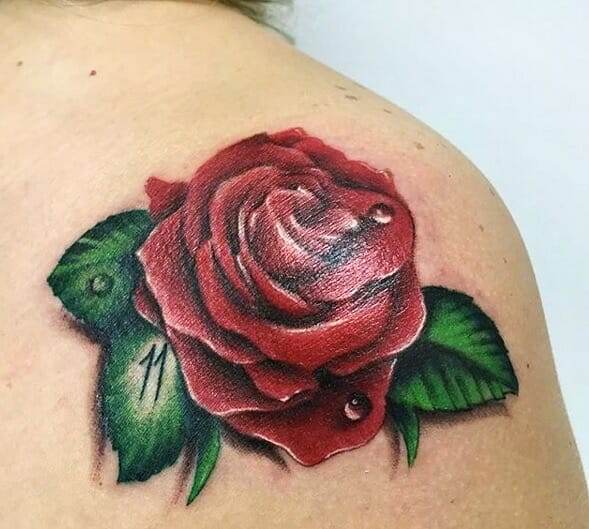
Choosing the Right Placement for Your Tattoo: Factors to Consider
Choosing the right placement for your tattoo is just as important as the design itself. The placement can significantly impact the overall look and feel of the tattoo, as well as its visibility and longevity. Here are some factors to consider when choosing a placement:
1. Size and complexity of the design: The size and complexity of your design will play a role in determining the suitable placement. Intricate designs may require a larger canvas, such as the back or thigh, while smaller, simpler designs can work well on the wrist or ankle.
2. Visibility and professional considerations: Consider whether you want your tattoo to be visible or easily concealable. If you work in a profession that has strict dress code policies or if you prefer to keep your tattoos private, you may want to choose a placement that can be easily covered by clothing.
3. Pain tolerance: Different areas of the body have varying levels of sensitivity and pain tolerance. Areas with more flesh, such as the upper arm or thigh, tend to be less painful than bony areas like the ribs or collarbone. Take your pain tolerance into account when choosing a placement.
4. Longevity and aging: Keep in mind that tattoos will age and change over time. Areas that are exposed to the sun or experience a lot of movement, such as the hands or feet, may fade or blur more quickly. Consider how your chosen placement will age and whether you are comfortable with potential changes in the tattoo’s appearance.
When discussing placement options during your consultation, be open to your tattoo artist’s suggestions. They have experience working with different body parts and can provide valuable insights into what will work best for your design and desired outcome.
Understanding the Tattooing Process: What to Expect During Your Session
Understanding the tattooing process is essential for a smooth and successful tattoo experience. While each artist may have their own unique approach, there are some general steps that are typically followed during a tattoo session.
1. Preparation: Before starting the tattoo, your artist will clean and disinfect the area to be tattooed. They will also shave any hair in the area to ensure a clean canvas for the tattoo.
2. Stencil application: Once the area is prepped, your artist will create a stencil of the design and apply it to your skin. This stencil acts as a guide for the tattooing process.
3. Tattooing: Using a tattoo machine, your artist will begin the tattooing process. They will work slowly and methodically, layering the ink into the skin to create the desired design. Throughout the process, they may ask for your feedback or check in to ensure your comfort.
4. Breaks and touch-ups: Depending on the size and complexity of the tattoo, your artist may take short breaks to rest their hand or allow you to take a break if needed. They may also do touch-ups or make adjustments during these breaks.
5. Cleaning and aftercare: Once the tattoo is complete, your artist will clean the area and provide you with aftercare instructions. They may apply a protective ointment or bandage to help with healing.
During the tattoo session, clear communication is crucial. If you experience any discomfort or have concerns, don’t hesitate to speak up. Your artist wants you to have a positive experience and will do their best to address any issues that arise.
Aftercare Instructions: The Importance of Clear Communication for Healing
Aftercare is a critical part of the tattoo process, as it ensures proper healing and longevity of your tattoo. Clear communication is essential when it comes to understanding and following aftercare instructions.
After your tattoo session, your artist will provide you with specific aftercare instructions tailored to your tattoo and skin type. These instructions may include washing the tattoo with mild soap, applying a recommended ointment or moisturizer, avoiding direct sunlight or swimming, and refraining from picking or scratching at the tattoo.
It’s important to ask questions if anything is unclear or if you need further clarification on any aspect of the aftercare instructions. Your artist wants your tattoo to heal properly, so they will be more than happy to provide additional guidance if needed.
Additionally, it’s crucial to communicate any issues or concerns you may have during the healing process. If you notice excessive redness, swelling, or signs of infection, contact your tattoo artist immediately. They can provide guidance or refer you to a medical professional if necessary.
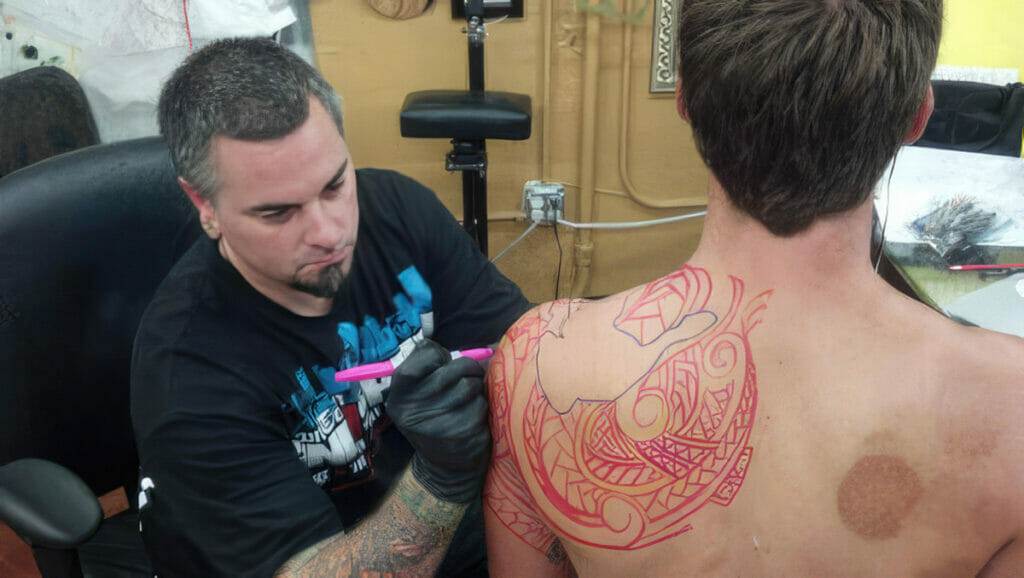
Handling Misunderstandings: Tips for Resolving Communication Issues
Despite the best efforts of both the client and the artist, misunderstandings can still occur during the tattoo process. It’s important to address these issues as soon as possible to prevent further complications or disappointment. Here are some tips for resolving communication issues:
1. Speak up: If you notice a misunderstanding or something doesn’t align with your vision, don’t hesitate to speak up. Politely and calmly express your concerns or ask for clarification. Your tattoo artist wants you to be happy with the final result, so they will be receptive to your feedback.
2. Be open to compromise: Sometimes, finding a solution may require a compromise from both parties. Be open to suggestions or modifications that can help bridge the gap between your vision and the artist’s expertise.
3. Seek clarification: If something is unclear or you don’t fully understand a suggestion or modification, ask for further clarification. It’s better to have a clear understanding before proceeding than to risk disappointment later on.
4. Take a break if needed: If tensions are running high or emotions are getting in the way of effective communication, it may be helpful to take a short break and revisit the issue with a fresh perspective.
Remember, effective communication is key in resolving misunderstandings and ensuring a positive tattoo experience. By addressing issues promptly and openly, you can work together with your tattoo artist to find a solution that satisfies both parties.
The Value of Clear Communication in Achieving Your Dream Tattoo
Clear communication is essential throughout the entire tattoo process, from the initial consultation to aftercare instructions. By effectively communicating your ideas, expectations, and concerns, you can ensure that you get the tattoo you envision and avoid any potential disappointment.
Tattoo consultations provide an opportunity to discuss your design ideas, ask questions, and establish trust with your tattoo artist. By preparing for your consultation, being open to suggestions, and asking questions, you can make the most out of this crucial meeting.
Throughout the tattoo process, clear communication helps build trust between the client and artist. This trust allows for collaboration and ensures that both parties are on the same page. It also enables the artist to provide valuable input and suggestions based on their expertise.
Choosing the right placement for your tattoo, understanding the tattooing process, and following aftercare instructions all require clear communication. By prioritizing communication at every step of the process, you can achieve your dream tattoo and have a positive and fulfilling experience.


